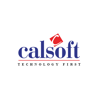LLMs are revolutionizing the way we interact with machines. Their ability to understand, summarize, and generate text is truly impressive. However, their dependence on static training data can lead to several issues. In this post, we'll explore how Retrieval-Augmented Generation (RAG) architectures address these limitations by enabling LLMs to access and process external knowledge sources, resulting in more up-to-date responses, minimized hallucinations, and the ability to leverage custom data.
RAG Architectures
RAG stands for Retrieval-Augmented Generation, an innovative architecture that enhances the capabilities of large language models (LLMs) by providing them with real-time access to external knowledge sources. This approach offers an excellent solution for training and maintaining an up-to-date knowledge database. Being LLM-agnostic, RAG allows seamless integration with various LLMs while leveraging our own data for optimal performance. By integrating external data retrieval with LLMs, RAG ensures more accurate, relevant, and current responses.
Main Components of RAG Architectures
The architecture is really simple, and you don't need to be a machine learning specialist to understand it. These are the parts:
- Your Data: This can include PDF files, documents, markdown files, and more.
- The Embedding Model: Embedding models are trained to generate vector embeddings—long arrays of numbers that capture semantic meaning.
- The Vector Database: This component stores and manages the vector embeddings, enabling efficient retrieval and interaction with the data.
How to Store My Information?
First of all, to make this accessible to the user, you need to store your information through a process that involves embeddings to allow natural language queries:
- Documents: This is the initial source of information, which can include various file types like PDFs, markdown files, etc.
- Generate Chunks: The documents are divided into smaller, manageable chunks to facilitate processing.
- Embedding Model: These chunks are then processed by an embedding model, which converts them into vector embeddings that represent semantic meaning.
- Store the Vectors: The generated vectors are stored in a Vector Database (Vector DB) for efficient retrieval and interaction.
How to Retrieve the Information?
During a conversation, to provide the required context to the LLM, it is necessary to search and retrieve the information:
- User Prompt: The user provides a query or prompt to initiate the process.
- Embedding Model: The embedding model generates vector embeddings based on the user's prompt.
- Search by Vectors: The vector embeddings are used to search the Vector DB for relevant matches.
- Return Results: The search returns the most relevant results, along with associated metadata or documents.
- Contextualized Prompt: The original prompt, now enriched with context from the returned results, is passed to the LLM.
- Generate Response: The LLM uses the contextualized prompt to generate an accurate and context-aware response.
In Conclusion
RAG architectures enable the creation of a continuously updated knowledge base without the need to retrain a large language model. This ensures ever-evolving knowledge and accurate responses, unlocking a world of possibilities—from enhanced chatbots and search engines to sophisticated recommendation systems and beyond.









Top comments (0)